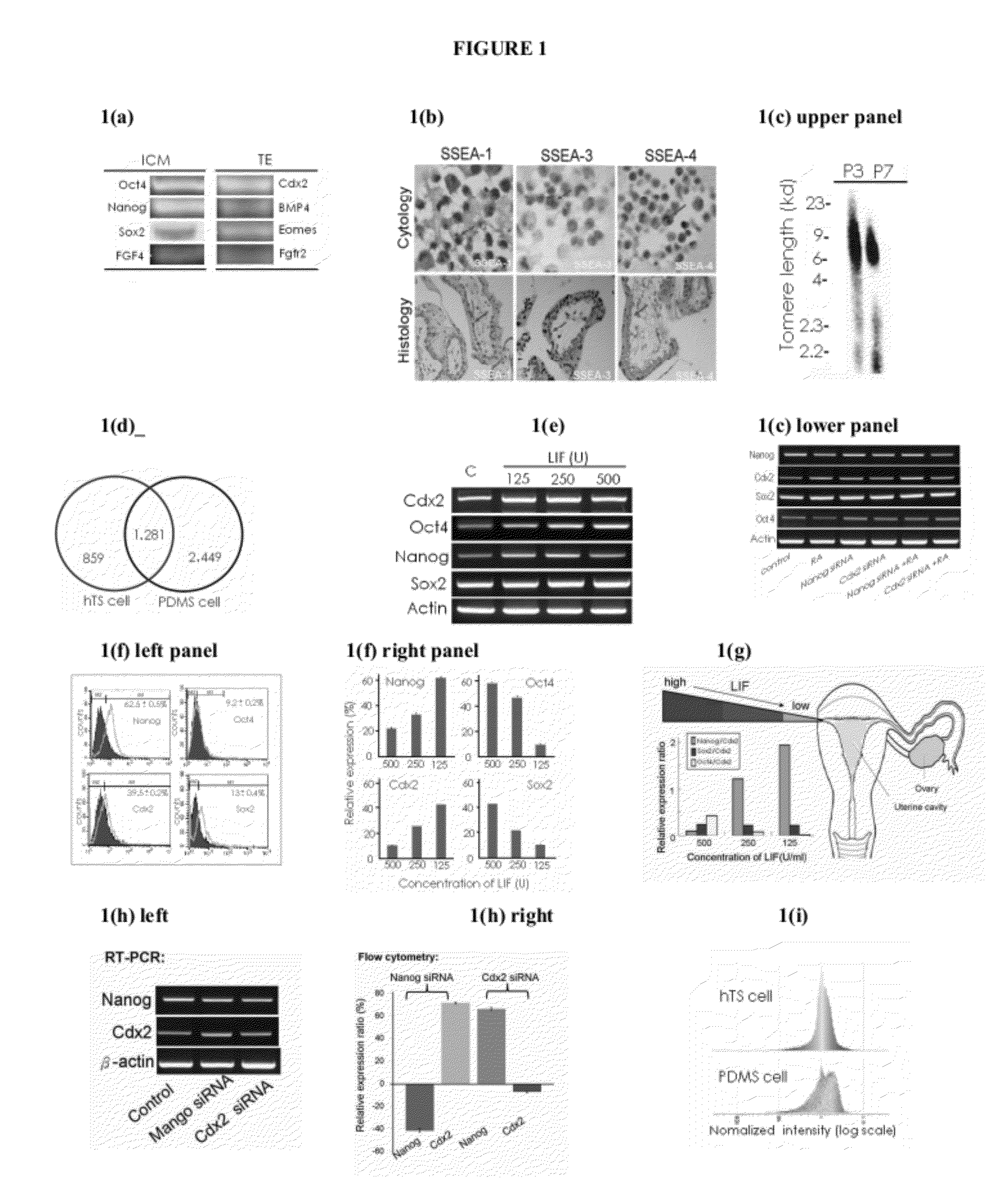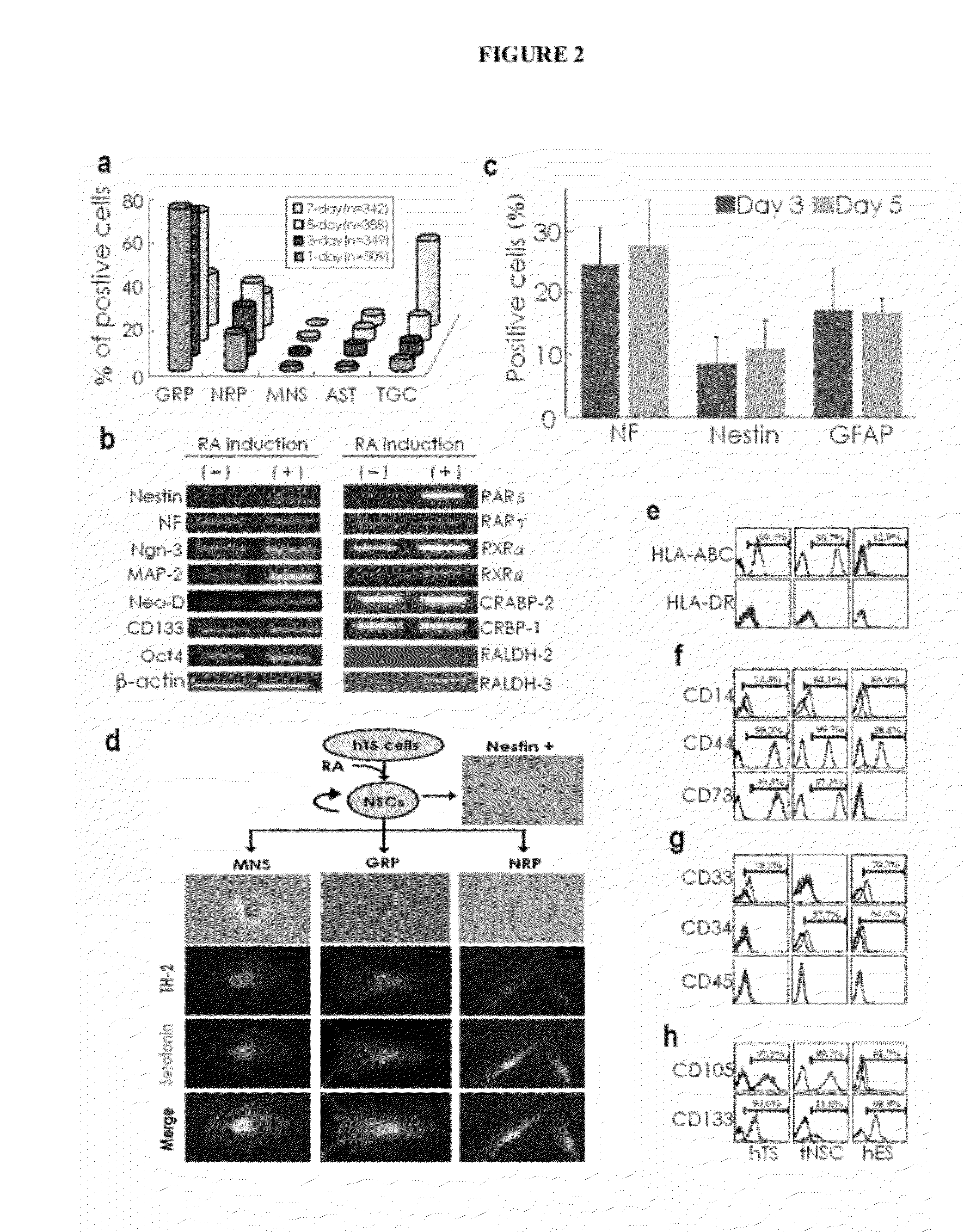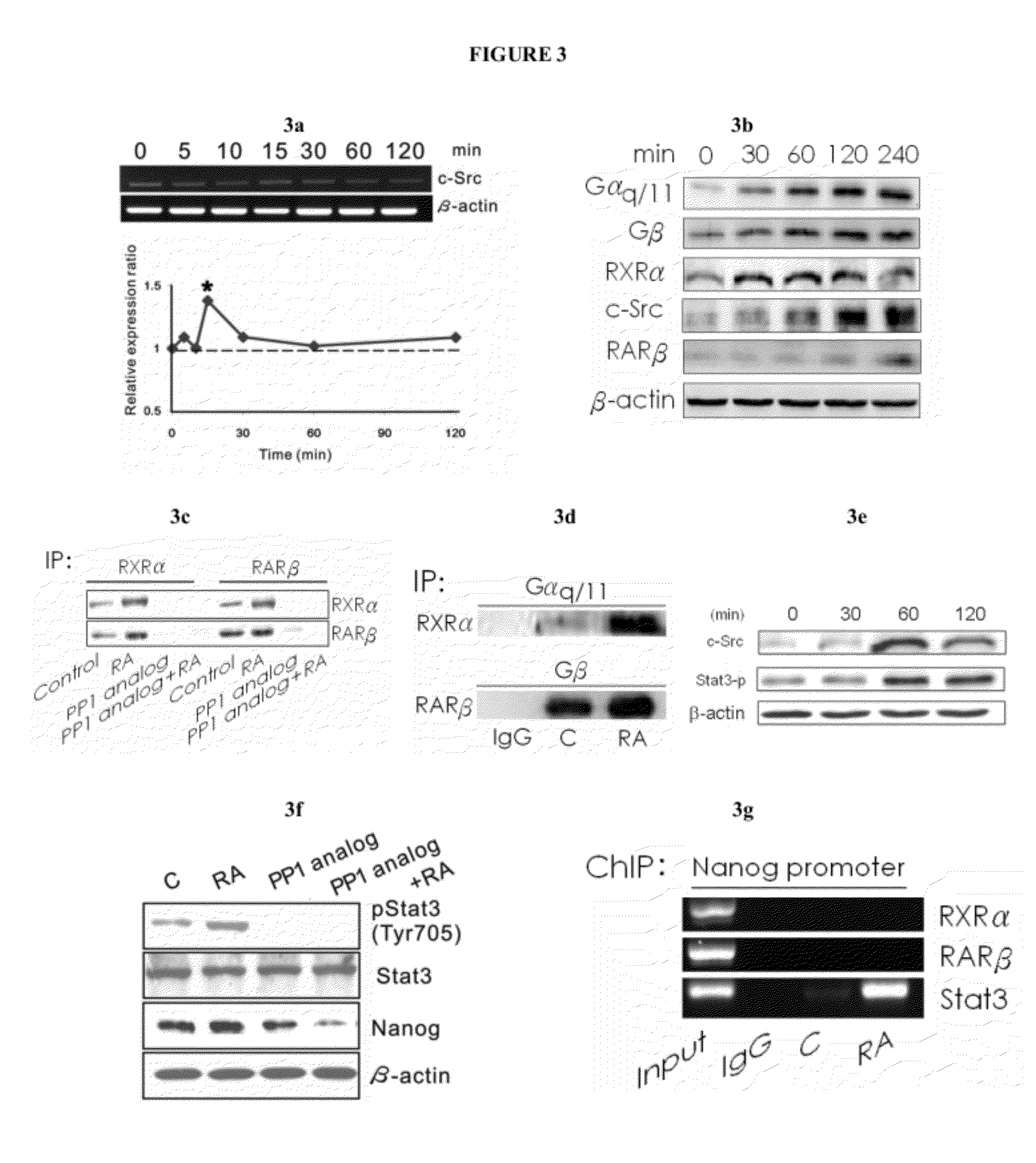Generation of Neural Stem Cells from Human Trophoblast Stem Cells
a neural stem cell and human trophoblast technology, applied in the field of neural stem cells from human trophoblast stem cells, can solve the problems that current drugs provide only limited benefits, and achieve the effects of improving sensorimotor function, and reducing the rigidity of said mammal
- Summary
- Abstract
- Description
- Claims
- Application Information
AI Technical Summary
Benefits of technology
Problems solved by technology
Method used
Image
Examples
example 1
Isolation, Differentiation and Cell Culture
[0253]Embryonic chorionic villious were obtained from the fallopian tubes of early ectopic pregnancy (gestational age: 6-8 weeks) in women via laparoscopic surgery, approved by the Institutional Review Board on Human Subjects Research and Ethics Committees. Tissues were minced in serum-free α-MEM (Sigma-Aldrich, St. Louis, Mo.) and trypsinized with 0.025% trypsin / EDTA (Sigma-Aldrich, St. Louis, Mo.) for 15 min and this digestion was halted by adding α-MEM containing 10% FBS. This procedure was repeated several times. After centrifugation, cells were collected and cultured with α-MEM containing 20% FBS (JRH, Biosciences, San Jose, Calif.) and 1% penicillin-streptomycin in 5% CO2 at 37° C. The hCG expression in the medium became undetectable after two passages of culture measured by a commercial kit (Dako, Carpinteria, Calif.).
[0254]Cell differentiation. hTS cells were cultured in conditioned α-MEM containing 20% FBS, 1% penicillin-streptomyc...
example 2
[0256]For plasmid transfection, hTS cells were induced by all-trans retinoic acid (10 μM) (Sigma-Aldrich, St. Louis, Mo.) overnight followed by co-transfection in a DNA mixture of F1B-GFP as described previously (Myers). Briefly, the DNA mixture was added slowly into DOTAP (100 μl) solution containing DOTAP (30 μl) liposomal transfection reagent (Roche Applied Science, Indianapolis, Ind.) and 70 μl HBSS buffer containing NaCl (867 g in 80 ml H2O) plus 2 ml HEPES solution (1 M, pH 7.4, Gibco) at 4° C. for 15 min. After wash by PBS, cells were mixed well with the DNA mixture. After incubation overnight, stable cells lines were obtained by G418 selection (400 μg / ml, Roche Applied Science) through culture for 2-3 weeks until the formation of colonies. The G418-resistant cells were pooled and lysed and analyzed by Western blotting using monoclonal anti-GFP antibody (Stratagene, La Jolla, Calif.) to quantify the percentage of transfectants that expressed GFP. By subcul...
example 3
RT-PCR and Quantitative PCR (qPCR)
[0257]For RT-PCR, total RNA from 105-106 cells was extracted by using TRIZOL reagent (Invitrogen) and mRNA expression by using a Ready-To-Go RT-PCR Beads kit (Amersham Biosciences, Buckinghamshire, UK). Briefly, the reaction products were resolved on 1.5% agarose gel and visualized with ethidium bromide. β-actin or β-2 microglobulin was used as a positive control. All experiments were performed in triplicate. For qPCR, gene expression was measured with the iQ5 Real-Time PCR Detection System (Bio-Rad Laboratories) and analyzed with Bio-Rad iQ5 Optical System Software, version 2.0 (Bio-Rad Laboratories). Relative mRNA levels were calculated using the comparative Ct method (Bio-Rad, instruction manual) and presented as a ratio to biological controls. All primer pairs were confirmed to approximately double the amount of product within one cycle and to yield a single product of the predicted size.
PUM
| Property | Measurement | Unit |
|---|---|---|
| Fraction | aaaaa | aaaaa |
| Absorbance | aaaaa | aaaaa |
| Immunogenicity | aaaaa | aaaaa |
Abstract
Description
Claims
Application Information
 Login to View More
Login to View More - R&D
- Intellectual Property
- Life Sciences
- Materials
- Tech Scout
- Unparalleled Data Quality
- Higher Quality Content
- 60% Fewer Hallucinations
Browse by: Latest US Patents, China's latest patents, Technical Efficacy Thesaurus, Application Domain, Technology Topic, Popular Technical Reports.
© 2025 PatSnap. All rights reserved.Legal|Privacy policy|Modern Slavery Act Transparency Statement|Sitemap|About US| Contact US: help@patsnap.com



